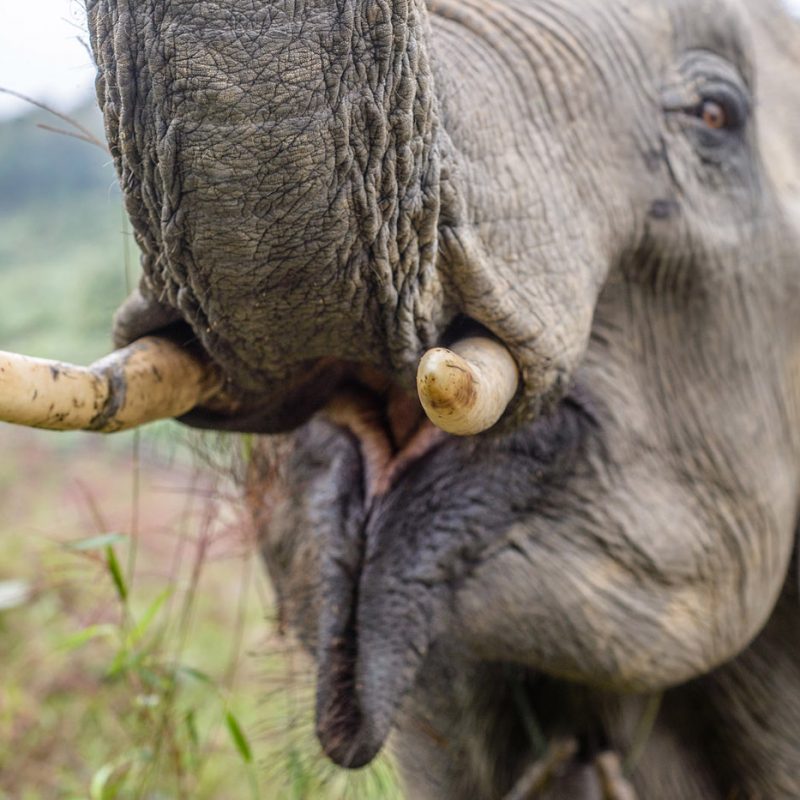History: Suriya was born in Ban Vieng Keo, Hongsa, and arrived at the ECC when he was just one month old, alongside his mother, Mae Ven. At the age of three, he earned the name “Suriya,” meaning “sun ray,” chosen by selecting a piece of sugarcane marked with the name from three options. Suriya was also the first captive elephant in Laos to be trained using the positive reinforcement technique. While he’s still learning with his mahouts and can sometimes be a bit cheeky, he was also the first calf to be integrated into the ECC’s herding area. Growing up in a natural herd environment, he now has the care of several female elephants who act as his “aunties,” along with his mother, Mae Ven. As he matures, Suriya will begin spending more time with other males who can teach him essential male-specific behaviours, which are crucial for his development as a bull elephant.
Suriya
Distinguishing features: Small tusks, athletic body, grey skin with no freckles.
Personality traits: Suriya loves playing with the two other juveniles Do Khoun Meuang and Noy. He is very curious, social and fearless.
Paternity: Not yet!

- Gender: Male
- Year of birth: November 2011
- Arrived at the ECC: December 2011
- Weight (2019): 1200 kg

As we do not have a Paypal account, we have established a partnership with the French NGO “Des Eléphants et Des Hommes” who receives your donations. Then all your donations are transferred in full to the Elephant Conservation Center.

